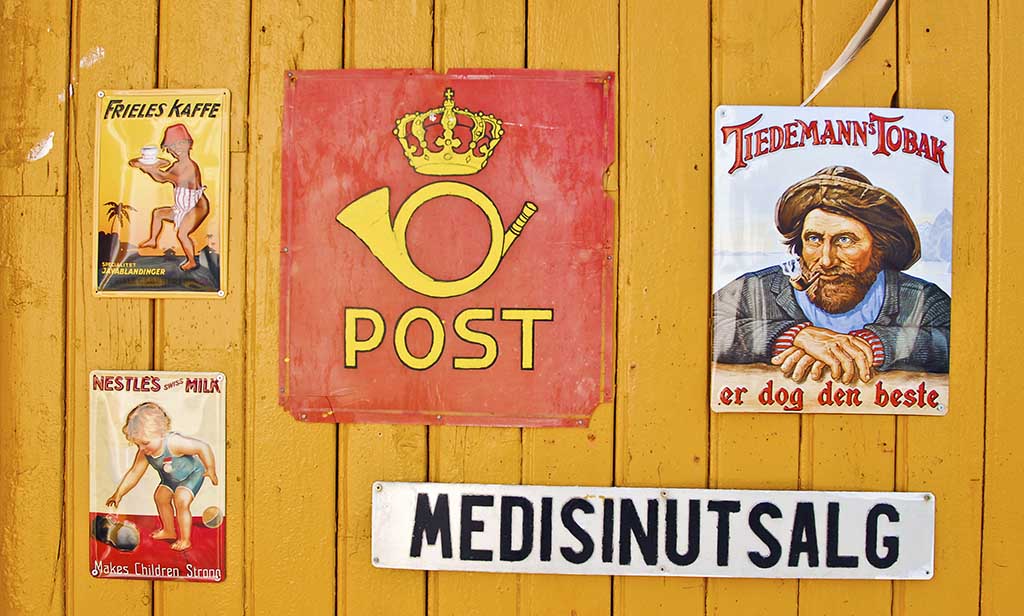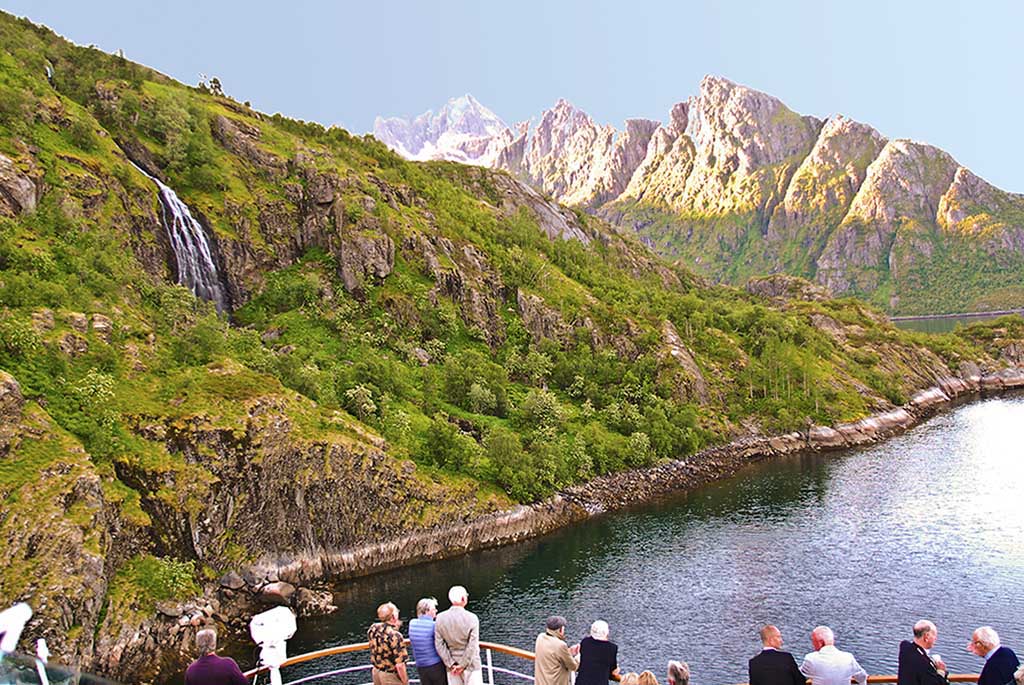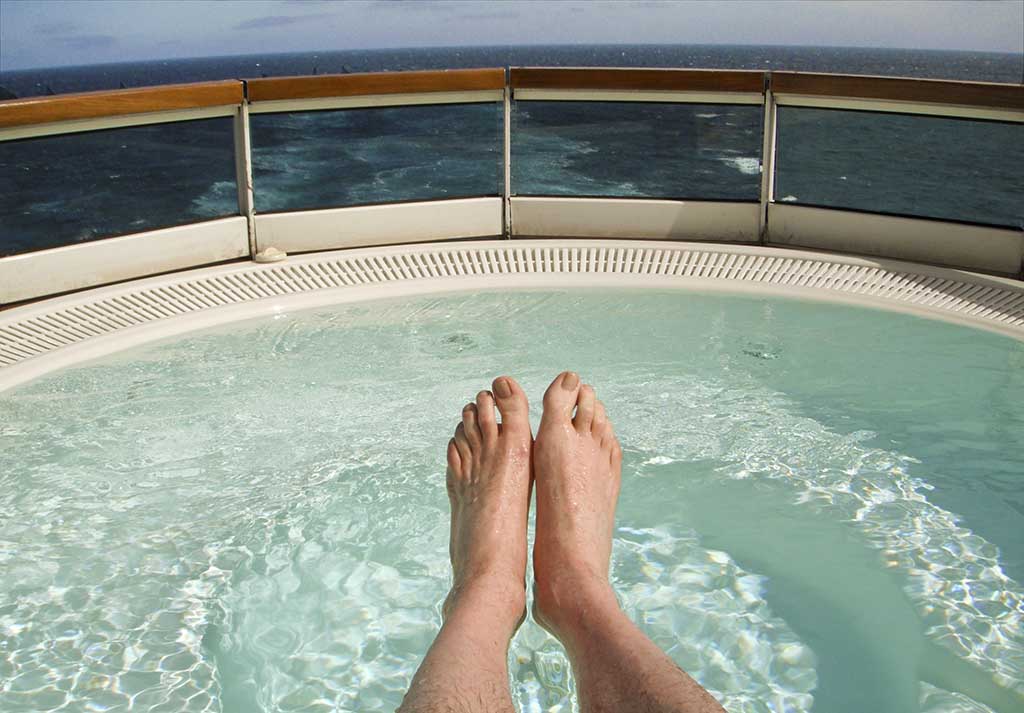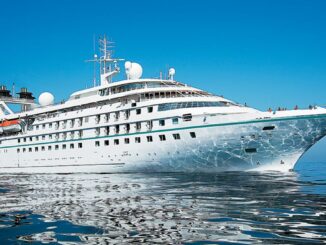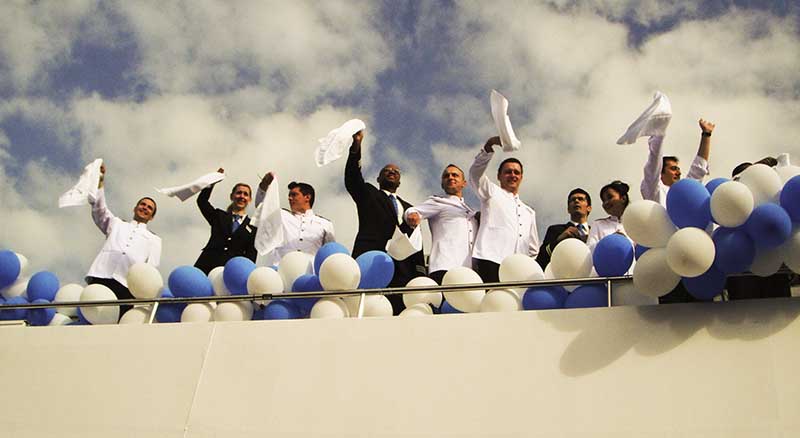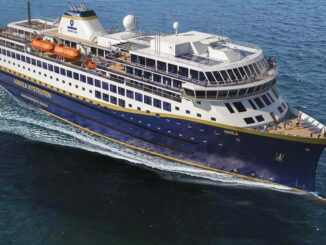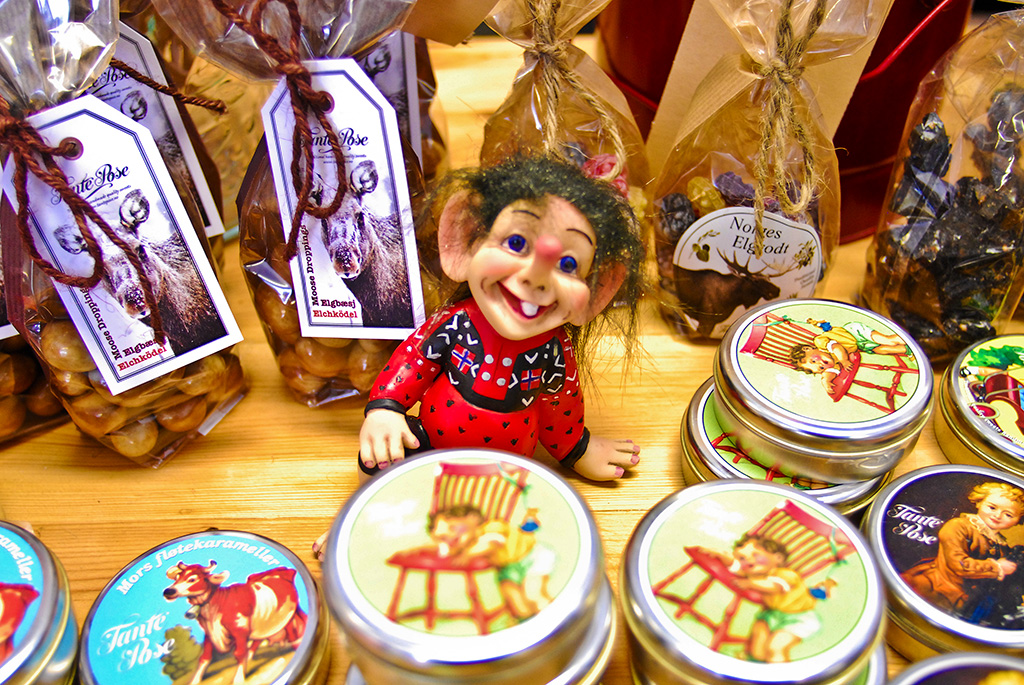
Today`s shore excursion from Seabourn Sojourn is “A Visit to A.”
Excuse me, give me a clue: It`s a visit to A what?
Our destination isn`t A as in the letter A, but rather a place spelled Å, with a halo on top, which is a word in Norwegian meaning stream.
The closest you can come to pronouncing it in English is “Awe,” which is appropriate because the setting is truly inspiring. It`s at the far end of the mountainous Lofoten Peninsula where snow covered peaks melt into waterfalls that flow into incredibly clear and remarkably blue bays.
The village is sometimes referred to as Å i Lofoten to distinguish it from a lot of other Norwegian places named Å. I’ve been struck by how geographic names in Norway tend to be almost childishly descriptive. In the early days, people never got very far from the village they grew up in, so talking about their village as being the town on the stream was sufficient. From there they could head to places named big mountain, deep lake or long fjord.
But while there may be other Å.’s, they couldn’t match this one’s setting.
The drive along the Lofoten Peninsula is one of the most scenic day trips in the world. We start at the dock at Leknes, a tiny port with only a few one-story frame homes dotting the hills. Shrubs rather than trees cling to the boulders that line the shore. The air is incredibly fresh and there isn`t a sound anywhere,–that is until other ships arrive. It’s becoming a popular port stop for small cruise ships. Fortunately Seabourn Cruise Line has priority and got to tie up Sojourn at the only dock while two other passenger ships visiting today had to anchor offshore and transfer passengers to shore by tender.
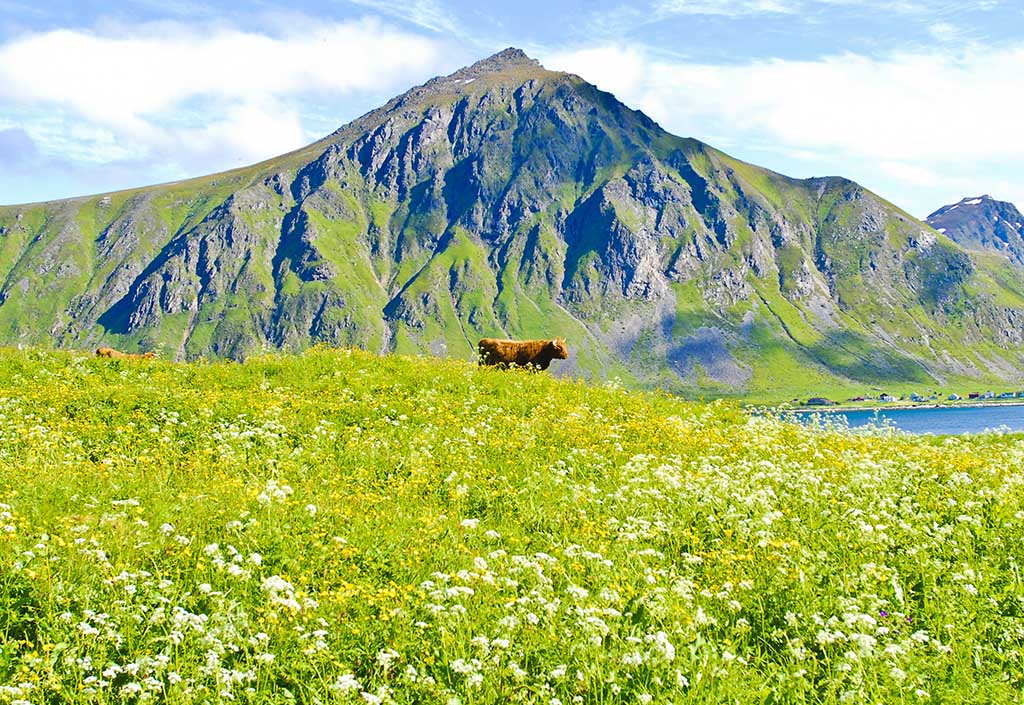
Very jagged pointed peaks suggest this area was still under glaciers in the not too distant past. In fact on this brilliantly sunny summer day the temperature was only 12 C—about 60 degrees. A saying here is that if it’s still snowing on midsummer’s day it`s going to be a late spring. We pass through a tunnel nearly a mile long and 100 feet meters below the bottom of the sea. It’s needed because heavy winter snow would make it impossible for cars to cross between islands by ferry in the winter.
Before the tunnels were built, it could take more than a dozen ferry crossings between islands to reach A from Leknes. The realities of winter show up in the construction of the tight little wooden homes here as well. They’re built with their front doors on tall porches high off the ground to be above the snow that can accumulate several feet deep. Metal roofs are common to bear the snow load, although many older homes still have sod roofs, and sheep and goats happily graze on the gables.
The fields are golden with wildflowers– particularly yellow buttercups–and dotted with livestock. Many of the cows here are fitted out with brassieres. They`re from a genetic line that has weak muscles attaching their udders to their chests and they produce so much milk they and drag on the group without bovine lingerie—with buttercup lace perhaps?
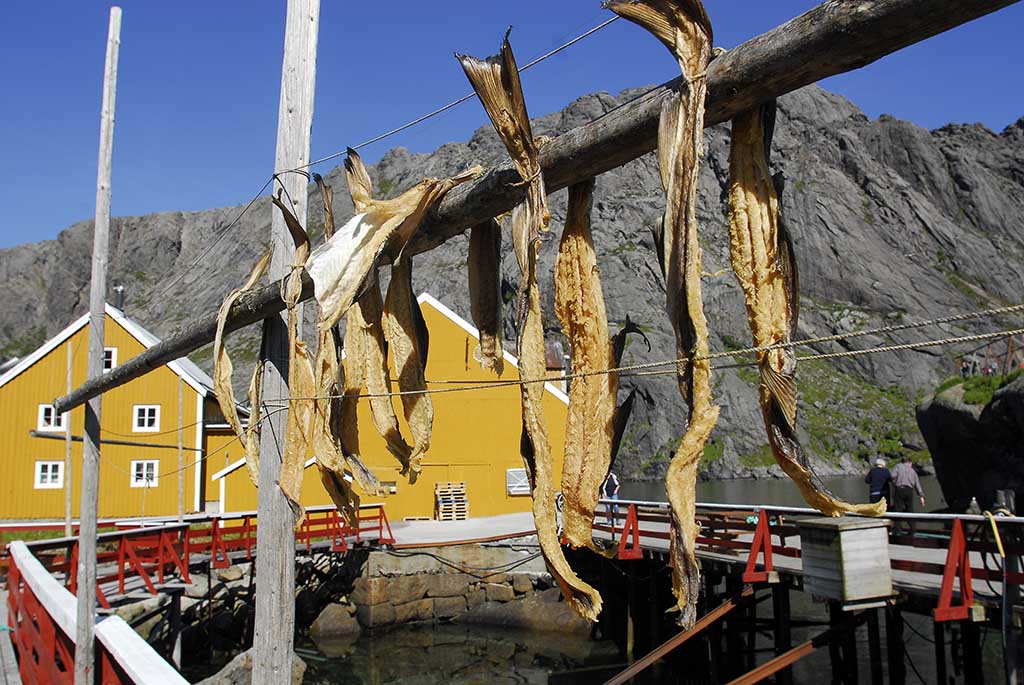
The oceans along this coast are prolific cod spawning grounds and if it weren’t for cod, this area would probably never have been settled, our guide Craig explains. Wooden drying racks are hung with strips of crisp cod—the traditional way of preserving fish is to let it air dry into a pungently smelling light brown crisp that can keep for years. The main buyers of dried fish these days are actually Italians we’re told—go figure. Stops include a visit to a log church at Flakstad built in 1780. It’s a landmark on a coast that’s known as “the Norwegian Riviera” for its broad beach of white sand. Even though we’re above the Arctic Circle the water is warmed by the Gulf Stream so while a dip in the water is a bracing experience, it’s tolerable. The glacier water is so exceptionally clear you can see to the bottom and watch schools of young fish swim along the shore.
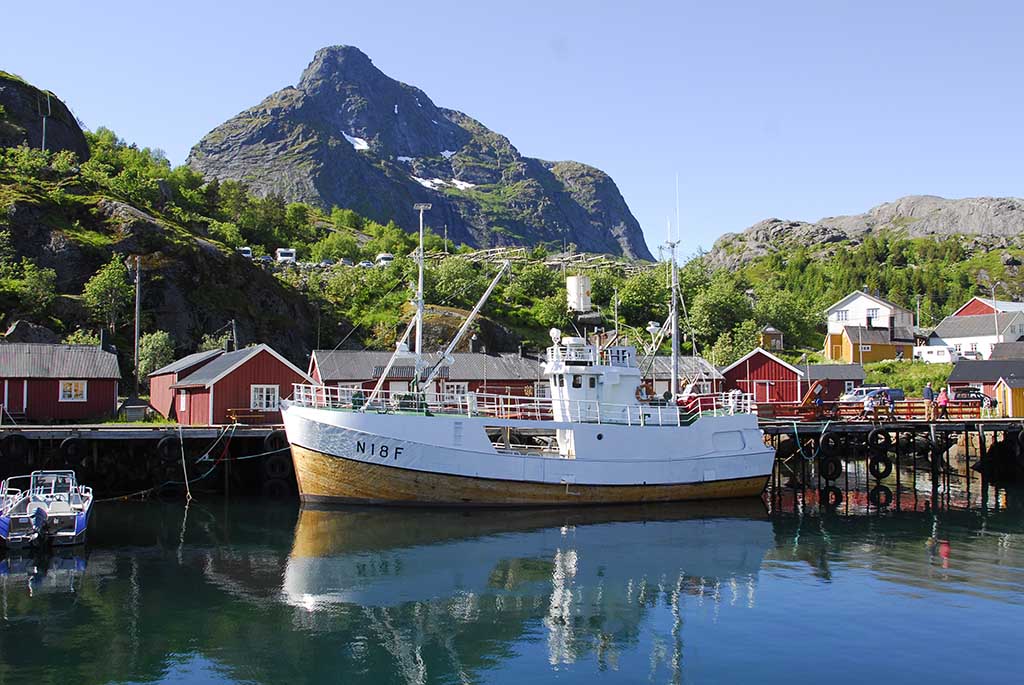
A quirky stop next is the Motor Museum, a little outport where eccentric Hans Gjertsen started tinkering with motors the way many men do in their spare time. He started restoring old boat engines and outboards but his collection grew vast–to the point where it fills a cluster of buildings with huffing and chugging old engines. A blacksmith shop still makes the spare parts. Even if you’re not into diesel mechanics, you’ll marvel at the idyllic setting of a bay filled with bright red boat houses sitting high on stilts surrounded by snow capped peaks. The gorgeous panoramas got even more remarkable as we headed down the coast.
Each village we passed was a picture postcard setting of tiny homes, boats and incredibly blue water. In the old days you could tell the social status of the inhabitants by the color of their homes, Craig tells us. Red paint was the least expensive and could be concocted using fish oil and blood; which must have had an interesting aroma on a warm day. Yellow was more difficult to make but could still be concocted locally. White paint had to be imported at great expense from Germany and only churches and the homes of the wealthy were white. Some tried to cheat by painting the fronts of their homes white but painting the other walls red.
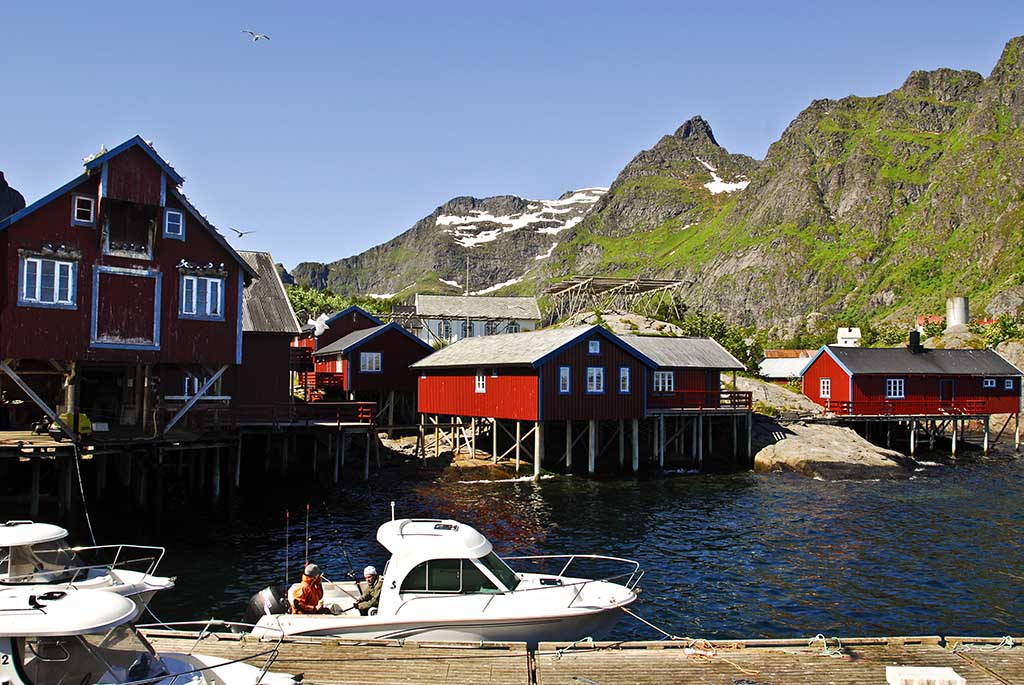
After a couple of hours driving on roads so narrow buses have to stop to let on-coming traffic pass, we finally reached the end of the road at Å.. It’s a classic fishing outport whose population in the winter is probably only a couple of hundred. But it gets extremely busy in the summer with not only busloads of tourists but thousands of birds flocking in. You can tell when a trawler is heading home by watching for the clouds of gulls swooping overhead.
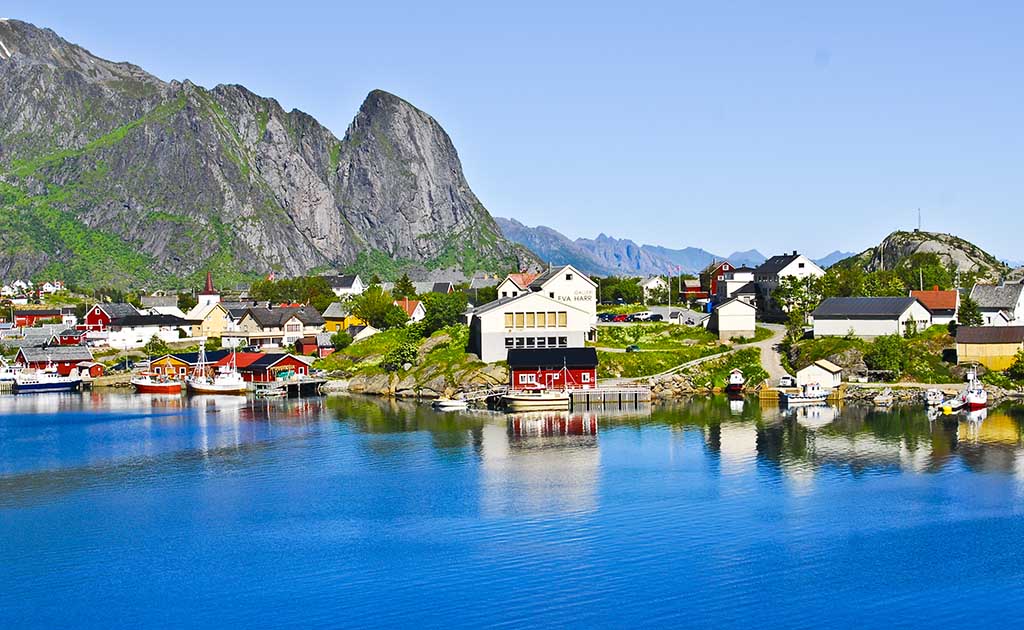
Some visitors rent a fishing shack and a boat and spend a week or more here in the summer. We’ve only got a couple of hours to shop, sightsee and have a traditional lunch including herring and salmon and a cold Mack beer brewed in Norway’s only brewery north of the Arctic Circle. The day’s excursion was an experience in going back in time. Even though we saw much of the same scenery on the way back to the ship, we were still in Åwe when we reached Seabourn Sojourn.
We returned to the modern world where dinner was about to be served and there wasn’t a dried cod in sight.
